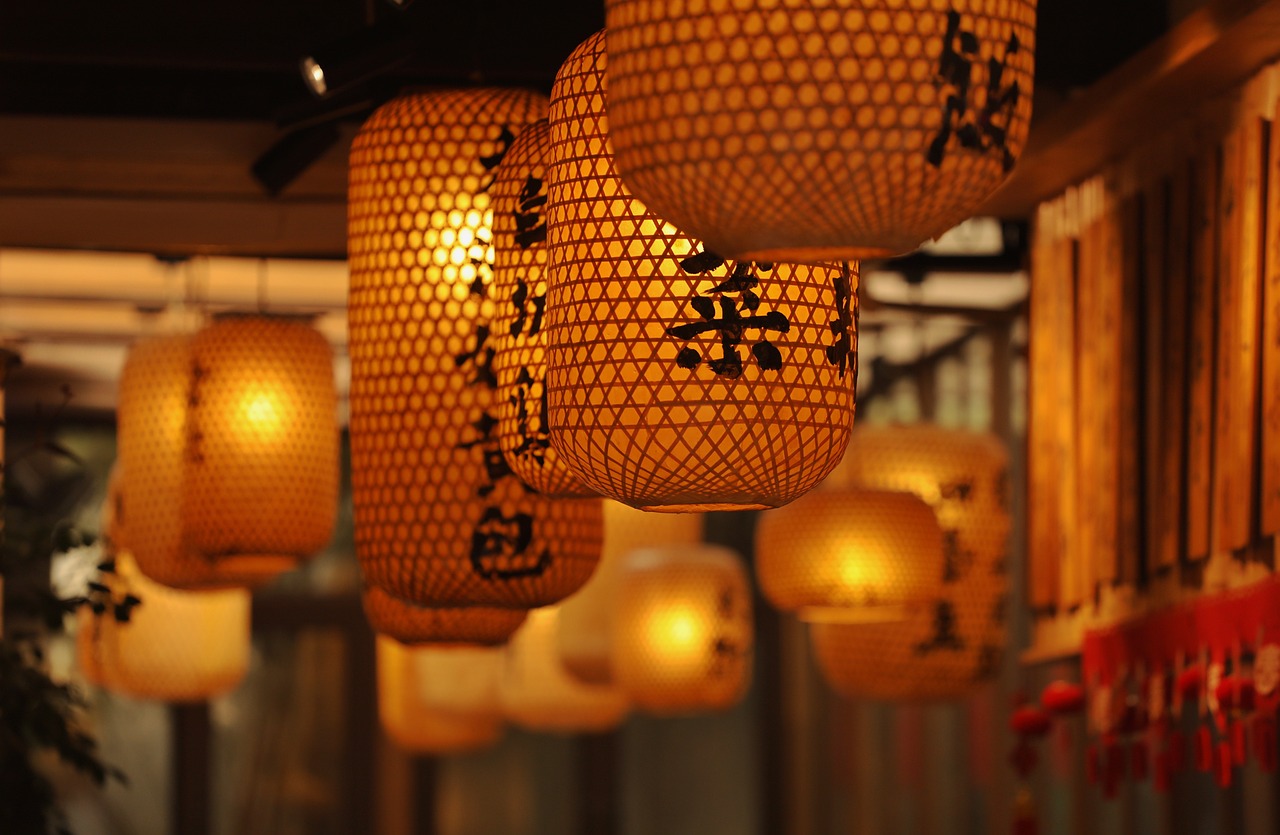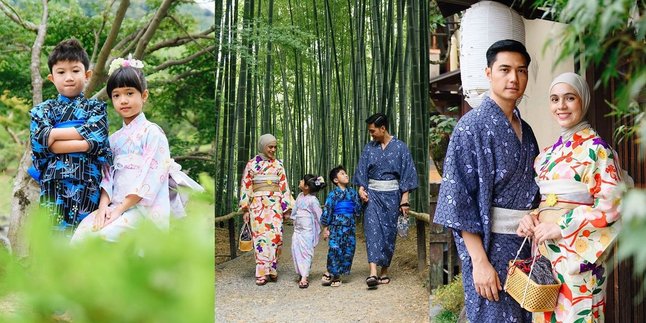Kapanlagi.com - New Year in Japan, known as 'Oshougatsu,' is one of the most important and meaningful celebrations in Japanese culture. In this article, Kapanlagi will provide an explanation behind the phrase 'Happy New Year' in Japanese, introduce various traditions surrounding it, and learn the proper pronunciation.
From sending Nengajo greeting cards to the Hatsumode ritual at temples, every aspect of the New Year celebration in Japan is filled with meaning and symbolism. You can also find out how people usually say 'Happy New Year' in Japanese. There are long versions, short versions, and including wishes.
Let's explore further how the Japanese people welcome the new year with hope and happiness. And the pronunciation of 'Happy New Year' in Japanese. Let's check it out.
1. Meaning of Happy New Year in Japanese

Illustration (credit: pixabay.com)
The greeting for Happy New Year in Japanese is "Akemashite omedetou gozaimasu". In Japan, saying "Akemashite omedetou gozaimasu" on New Year's Day is a highly respected tradition. You can give this greeting using New Year's cards sent to friends, family, and colleagues.
These cards are usually decorated with images related to the New Year. In addition to the greeting for Happy New Year in Japanese, Japanese people also make their first visit to a Shinto shrine or Buddhist temple at the beginning of the new year. All of this is done to pray for luck and well-being in the coming year.
Afterwards, there will be a celebration to mark the end of the year and welcome the new year, where people say goodbye to the old year and welcome the new year with good hopes. New Year's greetings are an important part of this tradition, connecting people and strengthening social relationships at the beginning of the new year.
2. Common Traditions during New Year in Japan

Illustration (credit: pixabay.com)
In addition to knowing how to say Happy New Year in Japanese, KLovers can also learn about the common traditions when celebrating New Year in Japan. New Year in Japan is known as "Oshougatsu", one of the biggest and most important celebrations in Japanese culture.
This is because New Year symbolizes hope, luck, and gratitude, making it a very important moment celebrated with great enthusiasm. Here is a complete explanation of the traditions and activities carried out during the New Year celebration in Japan:
1. Oosouji
Before New Year, usually at the end of December, Japanese families do a thorough cleaning of their houses. This tradition is done to welcome the new year with a clean and fresh environment, as well as to ward off bad luck from the previous year.
2. Kazari
Typical New Year decorations are installed in houses and business places. Some main decorations are:
- (Kadomatsu): Decorations made of bamboo and pine, placed in front of the door to welcome ancestral spirits and bring good luck.
- (Shimenawa): Sacred rope usually hung on the door to prevent evil spirits from entering.
- (Kagami mochi): A stack of two mochi rice cakes with an orange on top, symbolizing hope for health and wealth.
3. (Toshikoshi Soba)
On New Year's Eve, many Japanese people eat soba noodles called "Toshikoshi Soba." This tradition symbolizes the hope for longevity and prosperity. A long life represents a long and happy life.
4. Joya no Kane
At midnight, Buddhist temples throughout Japan ring bells 108 times.This is called "Joya no Kane" and symbolizes the expulsion of 108 human sins in the teachings of Buddha, allowing people to start the new year with a clean heart.
5. Hatsumode
Hatsumode is the first visit to a Shinto or Buddhist temple in the new year.People pray for luck, health, and safety in the coming year.Large temples like Meiji Jingu in Tokyo and Fushimi Inari Taisha in Kyoto are often very crowded in the early days of January.
6. Osechi Ryori
Osechi Ryori is the traditional New Year's food served in layered jubako boxes. Each dish in Osechi has a symbolic meaning, such as prosperity, health, and happiness.Some typical dishes include:
- (Kuromame): Black beans symbolizing health.
- (Kazunoko): Herring roe symbolizing fertility.
- (Kouhaku Kamaboko): Red and white fish paste symbolizing celebration and happiness.
7. (Nengajo)
New Year's greeting cards sent to friends, family, and colleagues.These cards are usually decorated with images and messages that say "Akemashite omedetou gozaimasu" (Happy New Year) and good wishes for the coming year.
8. (Otoshidama)
The tradition of giving money to children in small envelopes called "pochibukuro." Otoshidama is one of the most anticipated things for children during the New Year celebration.
9. Kakizome
On January 2nd, many Japanese people do Kakizome, which is writing their first calligraphy of the new year.Usually, they write words or phrases that reflect their hopes and resolutions for the new year.
10. Fukubukuro
Fukubukuro is a "lucky bag" sold by many stores during the early year.The bag contains various items with a higher value than the price paid, but the contents are a surprise.
3. How to Say Happy New Year in Japanese

Illustration (credit: pixabay.com)
Well, there are ways that KLovers can do to say Happy New Year in Japanese. You can say Happy New Year in Japanese with the full version, the short version, or using prayers and wishes. Here are the greetings for Happy New Year in Japanese:
1. "Akemashite omedetou gozaimasu"
Meaning: Happy New Year
Explanation: This greeting is used to welcome the new year and is often used in formal situations.
2. "Shinnen omedetou gozaimasu"
Meaning: Happy New Year
Explanation: This greeting also means Happy New Year, similar to "Akemashite omedetou gozaimasu", but is less commonly used.
3. "Ake ome"
Meaning: Happy New Year (short version)
Explanation: This is an informal and shorter version of "Akemashite omedetou".
4. "Kotoshi mo yoroshiku onegaishimasu"
Meaning: Please help me this year too
Explanation: This greeting is used to express the hope that a good relationship will be maintained in the new year.
5. "Yoi otoshi o"
Meaning: Wishing you a good year
Explanation: This greeting is usually used towards the end of the year to pray for someone to have a good year.
6. "Shinnen no gotakou o inori moushiagemasu"
Meaning: May the new year bring much happiness
Explanation: This greeting is often used in greeting cards and formal situations.
7. "Kenkou to han'ei o inotteimasu"
Meaning: I pray for your health and prosperity
Explanation: This greeting conveys wishes for health and prosperity in the new year.
8. "Subarashii ichinen ni narimasu you ni"
Meaning: May it become an extraordinary year
Explanation: This greeting is used to pray for an extraordinary year for someone.
9. "Shiawase na ichinen o osugoshi kudasai"
Meaning: I hope you have a happy year
Explanation: This greeting is used to wish happiness throughout the year.
10. "Atarashii toshi ga kouun to kenkou o motarashimasu you ni"
Meaning: May the new year bring luck and health
Explanation: This greeting is used to pray for luck and health in the new year.
That's the explanation of the greetings for Happy New Year in Japanese that you can know, complete with traditions and pronunciation. Happy learning, KLovers!
(kpl/dhm)
Disclaimer: This translation from Bahasa Indonesia to English has been generated by Artificial Intelligence.















